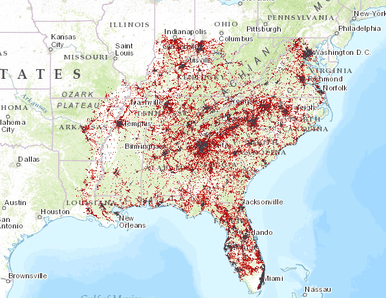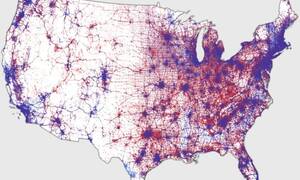Forecasters at the United Nations last fall updated their projections for the growth of cities across the planet over the next 15 years. World Urbanization Prospects is the type of report that fuels worry about teeming masses huddled amid poverty in mega-cities, where populations swell faster than infrastructure and services can possibly keep up.
Just over half the world’s people, 54 percent, today live in cities. As we add another 2.5 billion souls by 2050, that portion is projected to rise to 66 percent—two of every three people living in an urban area. Many will live in very large cities. In 1990, there were 10 mega-cities of 10 million people or more. Today, there are 28 such mega-cities. In 15 years, the report estimates there will be 41 mega-cities.
On the report’s world map, color-coded dots show high growth in Africa, Asia and Central America. No surprise there. Across Europe and the United States, the colors indicate slower growth. Again, as expected.
Demographers who have dug deeper into the data have identified U.S. cities that are projected to grow fastest through 2030. Topping the list are two that many probably wouldn’t expect: Raleigh and Charlotte.

Charlotte NPR affiliate WFAE talked with two North Carolina demographers, who cited strong economic growth, lower cost of living, higher immigration and migration to the state, and even better weather. Both Raleigh and Charlotte have been in the news and on lists of top cities the past few years, but the prospect that they will the fastest growing cities in the nation seems like a reality that has sneaked up on most of us.
Of course, growth doesn’t just happen accidentally. Lots of factors combine to attract and support growth. As you can read in my guest blog post at MPA@UNC, successful urban growth results from years of long-range planning by public administration professionals who gather data, analyze it and suggest policies that leaders and residents approve and implement.
Urban planners have a challenging job trying to look decades ahead and craft polices that will serve a growing city. Technology, the economy, housing, employment and other trends change quickly and sometimes unexpectedly. I’ve always respected what planners do.
In 1980, I earned a bachelor’s degree in planning and sought work at a time when the unemployment rate was 10.8 percent—higher than its peak of 10.0 percent in 2008, during the Great Recession. Job openings in planning were few. Governments at all levels were cutting back. I moved on to other pursuits but never regretted choosing my college major. The ideas and tools it taught me have been useful every day of my working life.
Current projections for urban growth suggest better job security and long-term demand for planners in the years ahead.


